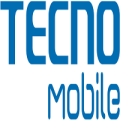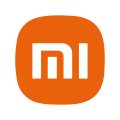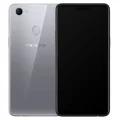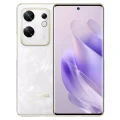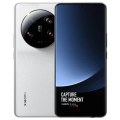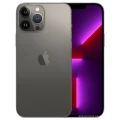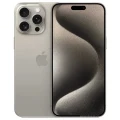- Awesome page
- Latest Mobile
- Smartphones
- Google Pixel 8 Pro
Google Pixel 8 Pro
Google Pixel 8 Pro Price in Bangladesh
The Google Pixel 8 Pro is a premium smartphone priced around BDT 88000 in Bangladesh. It offers a high-resolution display, a powerful processor, a versatile camera system with advanced computational photography features, and fast charging capabilities. It’s a popular choice among users who prioritize photography and software integration with Google services.
Specifications
General
| Model | Google Pixel 8 Pro |
| Announced | 2023, October 04 |
| Released | 2023, October 12 |
| Status | Available |
| Unofficial price | 12GB 128GB ৳88,000 |
Design
| Dimensions | 162.6 x 76.5 x 8.8 mm (6.40 x 3.01 x 0.35 in) |
| Weight | 213 g (7.51 oz) |
| Colors |
Obsidian, Porcelain, Bay |
Network
| Technology | GSM / CDMA / HSPA / EVDO / LTE / 5G |
| 2G Network |
GSM 850 / 900 / 1800 / 1900 CDMA 800 / 1700 / 1900 |
| 3G Network |
HSDPA 850 / 900 / 1700(AWS) / 1900 / 2100 CDMA2000 1xEV-DO |
| 4G Network | LTE |
| 5G Network |
SA/NSA/Sub6/mmWave - USA SA/NSA/Sub6 - International |
| GPRS <strong>GPRS</strong> (General Packet Radio Service) is a packet oriented mobile data service on the 2G and 3G cellular communication system's global system for mobile communications (GSM), Generally, GPRS is used for the purpose of wireless data transfer, such as sharing pictures and videos or browsing the Internet via a mobile phone connection. | |
| EDGE <strong>EDGE</strong> (Enhanced Data GSM Environment) is a wireless network technology generally considered the next step in the 2G network offers data transfer rates up to four times faster than ordinary GSM networks, Generally, EDGE is used for the purpose of wireless data transfer, such as sharing pictures and videos or browsing the Internet via a mobile phone connection. | |
| Speed | HSPA, LTE-A (CA), 5G |
Display
| Display Type <strong>Display Technology => </strong> A number of display technologies and types used in mobile phones => TFT (Thin Film Transistor), IPS (In-Place Switching), OLED (Organic Light Emitting Diode), AMOLED (Active-Matrix Organic Light-Emitting Diode), Super AMOLED (an even advanced version of AMOLED), Resistive Touchscreen (Resistive touchscreens contain two layer of conductive material with a very small gap between them which acts as a resistance), Capacitive Touchsceen (Capacitive touchscreen technology consists of a layer of glass coated with a transparent conductor) | LTPO AMOLED capacitive touchscreen, 16M colors |
| Size | 6.7 inches, 108.7 cm2 (~87.4% screen-to-body ratio) |
| Resolution | 1344 x 2992 pixels, 20:9 ratio (~489 ppi density) |
| Features |
Corning Gorilla Glass Victus 2 120Hz, HDR10+, 1600 nits (HBM), 2400 nits (peak) Always-on display |
Camera
Main camera
| Camera Setup | Triple |
| Primary <strong>Camera</strong> is able to capture photographs and usually videos, The most important characteristics of a camera are the resolution (measured in megapixels), lens focus type (fixed or automatic), higher megapixel cameras are known to capture higher quality photos, but not always a good measurement of the photos quality. |
50 MP, f/1.7, 25mm (wide), 1/1.31&amp;quot;, 1.2µm, multi-directional PDAF, multi-zone Laser AF, OIS 48 MP, f/2.8, 113mm (telephoto), 1/2.55&amp;quot;, 0.7µm, dual pixel PDAF, OIS, 5x optical zoom 48 MP, f/2.0, 126˚ (ultrawide), 0.8µm, dual pixel PDAF |
| Features |
Dual-LED flash, Pixel Shift, Auto-HDR, panorama |
| Video | 4K@30/60fps, 1080p@30/60/120/240fps; gyro-EIS, OIS, 10-bit HDR |
Selfie camera
| Camera Setup | Single |
| Primary <strong>Camera</strong> is able to capture photographs and usually videos, The most important characteristics of a camera are the resolution (measured in megapixels), lens focus type (fixed or automatic), higher megapixel cameras are known to capture higher quality photos, but not always a good measurement of the photos quality. |
10.5 MP, f/2.2, 21mm (ultrawide), 1/3.1&amp;quot;, 1.22µm |
| Features |
Auto-HDR |
| Video | 4K@30/60fps, 1080p@30/60fps |
Hardware
| Chipset <strong>Chipset</strong> is a group of integrated circuits designed to perform one or a more dedicated functions, often with real time computing constraints, Popular smartphones are equipped with more advanced embedded chipsets that can do many different tasks depending on their programming. | Google Tensor G3 (4 nm) |
| CPU <strong>CPU</strong> (Central Processing Unit) mostly known as processors, CPU processes instructions in order to carry out certain functions that make your device operate properly. Processors are often described as the brain of computers, smartphones and tablets, Smartphones and tablets rely on processors to carry out their every task, Processors are an incredibly important factor in selecting any type of computing device, including your smartphone. | Nine-core (1x3.0 GHz Cortex-X3 & 4x2.45 GHz Cortex-A715 & 4x2.15 GHz Cortex-A510) |
| GPU <strong>GPU</strong> (Graphics Processing Unit) is a single-chip processor designed to rapidly manipulate and alter memory to accelerate the creation of images in a frame buffer intended for output to a display, This includes things such as lighting effects, object transformations, and 3D motion. | Immortalis-G715s MC10 |
| RAM (Memory) <strong>RAM</strong> (Random Access Memory) is a type of computer memory that can be accessed randomly, any byte of memory can be accessed without touching the preceding bytes that allows information to be stored and accessed quickly from random locations. RAM is the most common type of memory found in computer systems, smartphones, tablets and other electronic devices. | 12 GB |
| Internal Storage <strong>Internal Storage</strong> is a data storage space (flash memory) mostly used in smartphones, tablets and other electronic devices where operating system, apps, music, photos, videos, files and other user data Is stored. | 128/256/512 GB / 1TB UFS 3.1 |
| Sensors <strong>Sensors</strong> are electronic components that detects and responds to some type of input from the physical environment. The specific input could be light, heat, motion, moisture, pressure and location, The output is generally a signal that is converted to use in computing systems, a location sensor, such as a GPS receiver is able to detect current location of your electronic device. |
Fingerprint (under display, optical), accelerometer, gyro, proximity, compass, barometer, thermometer (skin temperature) Ultra Wideband (UWB) support |
Connectivity
| Bluetooth <strong>Bluetooth</strong> is a wireless communications technology for exchanging data between mobile phones, headsets, computers and other network devices over short distances without wires, Bluetooth technology was primarily designed to support simple wireless networking of personal consumer devices. | 5.3, A2DP, LE, aptX HD |
| Infrared <strong>Infrared</strong> connectivity is an old wireless technology used to connect two electronic devices. It uses a beam of infrared light to transmit information and so requires direct line of sight and operates only at close range. | |
| USB | USB Type-C 3.2 |
| GPS <strong>GPS</strong> The Global Positioning System is a satellite-based radio navigation system, GPS permits users to determine their position, velocity and the time 24 hours a day, in all weather, anywhere in the world, In order to locate your position, your device or GPS receiver must have a clear view of the sky. | GPS (L1+L5), GLONASS (G1), BDS (B1I+B1c+B2a), GALILEO (E1+E5a), QZSS (L1+L5) |
| NFC <strong>NFC</strong> (Near field communication) is a set of standards for smartphones and similar devices to establish peer-to-peer radio communications with each other by touching them together or bringing them into proximity, usually no more than a few inches. |
Battery
| Battery Type <strong>Battery Type => </strong> Cell phones run on various kinds of batteries depending on the manufacturer, phone size or shape and features. There are basically four types of cell phone batteries => Lithium Polymer, Lithium Ion, Nickel Metal Hydride and Nickel Cadmium. | Non-Removable Li-Po |
| Capacity <strong>Battery Capacity</strong> is a measure (typically in Amp-hr) of the charge stored by the battery, and is determined by the mass of active material contained in the battery. The battery capacity represents the maximum amount of energy that can be extracted from the battery under certain conditions. | 5050 mAh |
| Charging Charging | 30W wired, PD3.0, PPS, 50% in 30 min (advertised) 23W wireless Reverse wireless |
Pixel Perfection or Just Another Phone? Google Pixel 8 Pro Unwrapped
In the bustling world of smartphones, the Google Pixel 8 Pro emerges as a beacon for tech enthusiasts and loyal Google fans. Positioned as a flagship contender, it promises to deliver an experience that’s both innovative and seamless. But does it live up to the hype? In this comprehensive review, we’ll dissect the Pixel 8 Pro, exploring its design, camera, performance, and more, to see if it truly stands out in the crowded smartphone market. Whether you’re a tech aficionado or a casual user, this review aims to provide insights that cater to your curiosity and decision-making needs.
Design That Speaks Elegance
The first impression of any smartphone is often dictated by its design, and the Pixel 8 Pro doesn’t disappoint. Crafted with premium materials, it boasts a sleek and modern aesthetic that is both eye-catching and functional. The ergonomic build ensures comfortable handling, making it a joy to use daily. With a subtle yet sophisticated finish, the Pixel 8 Pro appeals to those who appreciate elegance in their tech gadgets. The attention to detail in design extends to its tactile buttons and thoughtfully placed hardware features, contributing to a seamless user experience.
In terms of durability, the Pixel 8 Pro is built to withstand the rigors of everyday use. Its robust construction includes reinforced glass and metal elements, which not only add to its premium feel but also provide essential protection against drops and scratches. This combination of style and sturdiness makes the Pixel 8 Pro a reliable companion for users who demand both performance and aesthetics from their devices.
The design also incorporates practical elements, such as improved water and dust resistance, ensuring that the Pixel 8 Pro can handle various environments without compromising its functionality. This level of detail in design reflects Google’s commitment to delivering a smartphone that caters to the diverse needs of modern users, further solidifying its position in the premium segment.
Camera Capabilities That Impress
Photography enthusiasts will find much to admire in the Pixel 8 Pro’s camera system. Known for its prowess in capturing stunning images, the Pixel series has once again raised the bar. The Pixel 8 Pro features advanced camera technology that excels in various shooting conditions, particularly in low-light environments. With enhanced sensors and improved algorithms, it captures details with remarkable clarity, making even night shots look vivid and detailed.
Video recording is another area where the Pixel 8 Pro shines. It offers smooth and stable footage, thanks to its sophisticated stabilization features. Whether you’re filming a high-energy event or a serene landscape, the Pixel 8 Pro ensures video quality that rivals dedicated cameras. Its intuitive camera interface allows users to access various modes and settings effortlessly, making it easier to capture the perfect shot every time.
Additionally, the Pixel 8 Pro introduces new software features that enhance the photography experience. With AI-driven enhancements, users can expect smarter scene recognition and automatic adjustments that optimize each shot. This level of innovation not only simplifies the photography process but also empowers users to achieve professional-quality results with minimal effort.
Unmatched Performance and Efficiency
Under the hood, the Pixel 8 Pro is a powerhouse designed to handle demanding tasks with ease. Its processor is engineered for speed and efficiency, ensuring that apps launch quickly and multitasking is seamless. Whether you’re gaming, streaming, or working, the Pixel 8 Pro delivers a smooth and responsive experience that meets the expectations of today’s tech-savvy users.
Battery life is another strong suit of the Pixel 8 Pro. Equipped with a high-capacity battery, it provides ample power to get through a full day of heavy use. Intelligent power management features further enhance battery efficiency, allowing users to enjoy their device without constantly worrying about recharging. This focus on performance and battery life makes the Pixel 8 Pro a reliable choice for users who are always on the go.
User experience is paramount, and the Pixel 8 Pro excels in this area with its clean and intuitive interface. Navigation is fluid, and the overall system performance is optimized to ensure minimal lag and quick responsiveness. This attention to detail in performance and user experience highlights Google’s commitment to delivering a smartphone that meets the needs of a diverse user base.
Software Features That Elevate Experience
At the heart of the Pixel 8 Pro’s software experience is the latest Android version, which brings a host of new features and improvements. Google’s integration of exclusive services such as Google Assistant enhances the overall functionality of the device, making it more than just a smartphone. The Pixel 8 Pro’s software is designed to be intuitive and user-friendly, offering a seamless experience that adapts to each user’s needs.
One of the standout features is the enhanced AI capabilities, which provide smarter suggestions and personalized experiences. From predictive text to intelligent app recommendations, the Pixel 8 Pro’s software works behind the scenes to make everyday tasks more efficient and enjoyable. This level of intelligence ensures that users get the most out of their device, regardless of their tech proficiency.
Security and privacy are also prioritized in the Pixel 8 Pro’s software. With regular updates and robust security measures, users can trust that their data is protected. Google’s commitment to privacy is evident in features like customizable privacy settings and transparent data usage policies. This assurance of security, combined with innovative software features, makes the Pixel 8 Pro a formidable contender in the smartphone market.
How the Pixel 8 Pro Stacks Up Against Rivals
In the competitive landscape of flagship smartphones, the Pixel 8 Pro holds its own with a blend of innovative features and reliable performance. When compared to other leading devices, the Pixel 8 Pro stands out for its exceptional camera capabilities and seamless integration of Google services. Its unique strengths lie in areas where other smartphones may falter, such as low-light photography and software updates.
However, there are areas where the Pixel 8 Pro faces stiff competition. Some rivals may offer additional hardware innovations or unique design elements that appeal to specific user preferences. Despite these challenges, the Pixel 8 Pro’s comprehensive feature set and strong performance make it a compelling choice for many users. Its ability to deliver a consistently high-quality experience ensures it remains a top contender in the flagship category.
Ultimately, the Pixel 8 Pro’s value proposition lies in its holistic approach to smartphone design. By focusing on the aspects that matter most to users—camera quality, software experience, and performance—it offers a balanced package that caters to a wide range of needs. This strategic positioning reinforces the Pixel 8 Pro’s status as a leading option for those seeking a premium smartphone experience.
Real-World Perspectives from Pixel 8 Pro Users
User testimonials provide valuable insights into the Pixel 8 Pro’s real-world performance and user satisfaction. Many users praise the device for its exceptional camera quality, highlighting its ability to capture stunning images effortlessly. The user-friendly interface and smooth performance are also frequently mentioned as standout features that enhance the overall experience.
Feedback on battery life and durability is generally positive, with users appreciating the device’s ability to handle heavy use without faltering. The Pixel 8 Pro’s design receives accolades for its premium feel and ergonomic comfort, further contributing to user satisfaction. These testimonials reflect the Pixel 8 Pro’s success in meeting the expectations of its diverse user base.
However, some users have voiced concerns about specific aspects, such as the absence of certain hardware features found in competing devices. While these points may influence individual purchasing decisions, the overall consensus remains favorable. The Pixel 8 Pro’s ability to deliver consistent performance and value continues to resonate with users, affirming its reputation as a top-tier smartphone.
Summing Up the Pixel 8 Pro’s Impact
In conclusion, the Google Pixel 8 Pro emerges as a formidable player in the smartphone arena, combining innovative features with practical functionality. Its strengths in camera performance, software experience, and user satisfaction make it a standout choice for tech enthusiasts and casual users alike. The Pixel 8 Pro’s ability to deliver a cohesive and reliable experience ensures it remains a top contender in the competitive smartphone market.
For potential buyers, the Pixel 8 Pro offers a compelling blend of advanced technology and user-friendly features. Its emphasis on delivering value through meaningful innovation aligns with the needs of today’s consumers, who seek devices that enhance their everyday lives. The Pixel 8 Pro’s success is a testament to Google’s commitment to pushing the boundaries of what a smartphone can achieve.
As you consider your next smartphone purchase, the Pixel 8 Pro presents itself as a worthy option. Its combination of cutting-edge features and reliable performance makes it an attractive choice for those who value quality and functionality. Explore the possibilities with the Pixel 8 Pro and experience the future of smartphone technology today.














